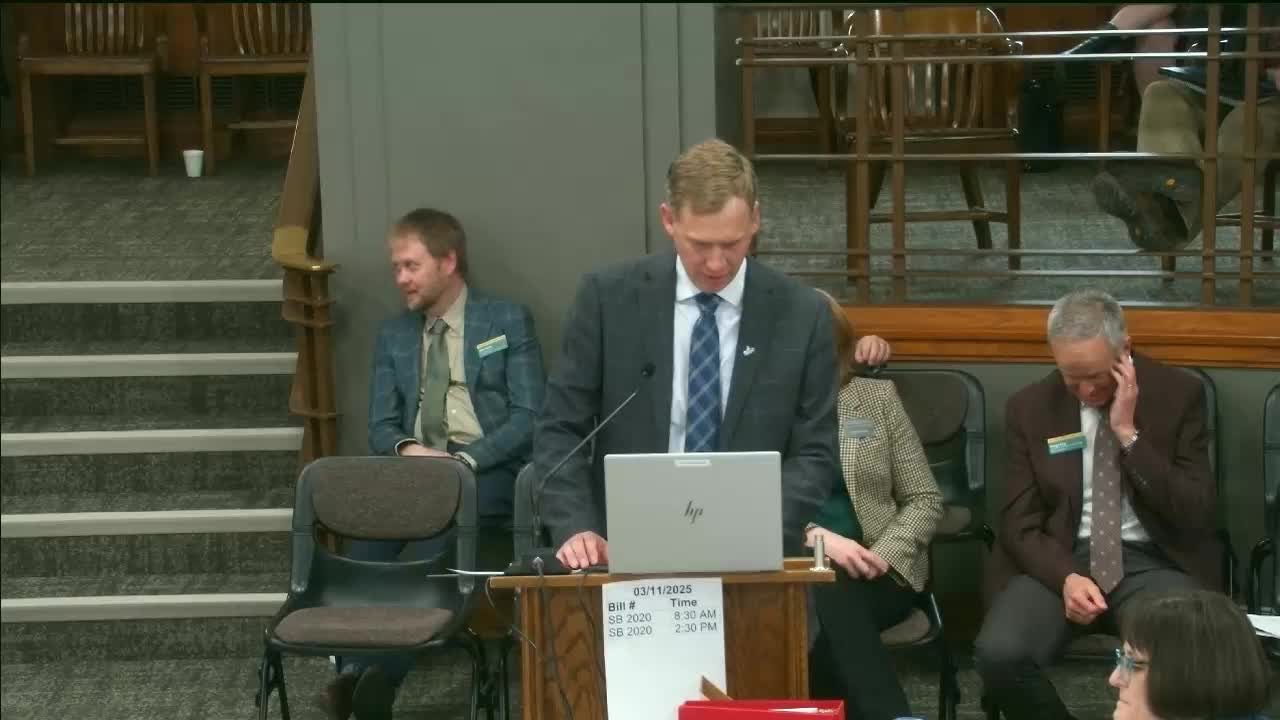Farmers urge North Dakota policymakers to prioritize carbon intensity research
March 11, 2025 | Appropriations - Government Operations Division, House of Representatives, Legislative, North Dakota
This article was created by AI summarizing key points discussed. AI makes mistakes, so for full details and context, please refer to the video of the full meeting. Please report any errors so we can fix them. Report an error »

A North Dakota farmer highlighted the critical role of biofuels and carbon management in the state's agricultural future during a recent House Appropriations meeting. Speaking passionately about the growth of the biomass-based diesel industry, he noted that production has skyrocketed from 200 million gallons annually to over 5 billion gallons this year, significantly impacting local soybean and canola markets.
The farmer, who has been involved in various agricultural organizations for 15 years, expressed concern over new carbon intensity (CI) scoring models that could disadvantage North Dakota crops. He emphasized that while cover crops are beneficial in many regions, they pose challenges in North Dakota's unique climate, where early frost dates hinder their growth. Instead, he advocated for recognizing the state's effective crop rotation systems and the benefits of living roots in the soil.
He urged policymakers to invest in research that accurately reflects the carbon intensity of North Dakota's agricultural practices, warning that current models could lead to unjust penalties for local farmers. The potential economic impact is significant; aligning CI scores could add 30 to 35 cents per bushel to soybean values, translating to millions in added revenue for the state's farmers.
In a related discussion, David Hill, chair of the North Dakota State Soil Conservation Committee, voiced strong support for increased funding for soil conservation districts. He highlighted the essential role these districts play in promoting sustainable agricultural practices and improving soil health. Hill reported that in 2024, conservation districts engaged nearly 20,000 students and 13,000 adults in educational programs, underscoring the importance of reliable funding for their operations.
Both speakers underscored the need for continued investment in North Dakota's agricultural infrastructure to ensure the long-term sustainability and profitability of the state's farming sector. As the meeting concluded, the urgency for policymakers to understand and support these initiatives was clear, with the future of North Dakota agriculture hanging in the balance.
The farmer, who has been involved in various agricultural organizations for 15 years, expressed concern over new carbon intensity (CI) scoring models that could disadvantage North Dakota crops. He emphasized that while cover crops are beneficial in many regions, they pose challenges in North Dakota's unique climate, where early frost dates hinder their growth. Instead, he advocated for recognizing the state's effective crop rotation systems and the benefits of living roots in the soil.
He urged policymakers to invest in research that accurately reflects the carbon intensity of North Dakota's agricultural practices, warning that current models could lead to unjust penalties for local farmers. The potential economic impact is significant; aligning CI scores could add 30 to 35 cents per bushel to soybean values, translating to millions in added revenue for the state's farmers.
In a related discussion, David Hill, chair of the North Dakota State Soil Conservation Committee, voiced strong support for increased funding for soil conservation districts. He highlighted the essential role these districts play in promoting sustainable agricultural practices and improving soil health. Hill reported that in 2024, conservation districts engaged nearly 20,000 students and 13,000 adults in educational programs, underscoring the importance of reliable funding for their operations.
Both speakers underscored the need for continued investment in North Dakota's agricultural infrastructure to ensure the long-term sustainability and profitability of the state's farming sector. As the meeting concluded, the urgency for policymakers to understand and support these initiatives was clear, with the future of North Dakota agriculture hanging in the balance.
View full meeting
This article is based on a recent meeting—watch the full video and explore the complete transcript for deeper insights into the discussion.
View full meeting
